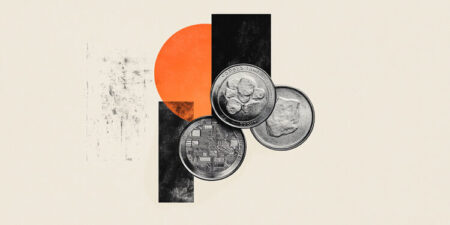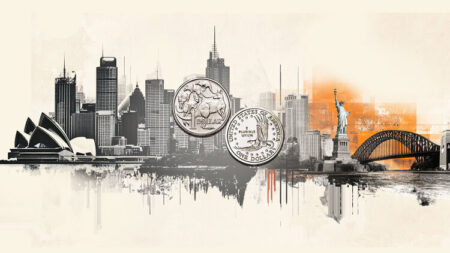- AUD/USD rises marginally to near 0.6500 as the US Dollar faces slight selling pressure.
- Trump sends termination letter to Fed’s Cook over mortgage allegations.
- The RBA signaled more interest rate cuts this year.
The AUD/USD pair ticks higher to near the psychological level of 0.6500 during the European trading hours on Tuesday. The Aussie pair edges up as the US Dollar (USD) faces slight selling pressure, following the release of a letter by United States (US) President Donald Trump stating the termination of Federal Reserve (Fed) Governor Lisa Cook over mortgage allegations.
At the time of writing, the US Dollar Index (DXY), which tracks the Greenback’s value against six major currencies, trades 0.2% lower to near 98.20.
On late Monday, US President Trump fired Cook from her designation, with immediate effect, for making false statements on one or more mortgage agreements.
However, Cook said that she will continue to carry out her duties as Fed Governor. In a statement shared by her attorneys, “President Trump purported to fire me ‘for cause’ when no cause exists under the law, and he has no authority to do so.”
Market experts are seeing the event as an attack on Fed’s independence for fulfilling his economic agenda. “The concern is the intent of the Trump administration: it’s not to preserve Fed integrity, it’s to install Trump’s own people at the Fed,” analysts at Capital.com said, Reuters reported.
Trump had attacked Fed’s dignity a several times by threatening to remove Chair Jerome Powell for arguing in favor of holding interest rates steady.
In Tuesday’s session, investors will focus on US Durable Goods Orders data for July, which will be published at 12:30 GMT. Economists expect fresh orders for durable goods have declined again, but at a moderate pace of 4%, compared to a 9.3% contraction seen in June.
Meanwhile, the Australian Dollar (AUD) trades broadly stable even as Reserve Bank of Australia (RBA) minutes of the August monetary policy meeting signaled that officials see the need of further interest rate cuts in the remainder of the year. However, the pace of rate cuts would be determined by incoming data and the balance of global risks.
US Dollar FAQs
The US Dollar (USD) is the official currency of the United States of America, and the ‘de facto’ currency of a significant number of other countries where it is found in circulation alongside local notes. It is the most heavily traded currency in the world, accounting for over 88% of all global foreign exchange turnover, or an average of $6.6 trillion in transactions per day, according to data from 2022.
Following the second world war, the USD took over from the British Pound as the world’s reserve currency. For most of its history, the US Dollar was backed by Gold, until the Bretton Woods Agreement in 1971 when the Gold Standard went away.
The most important single factor impacting on the value of the US Dollar is monetary policy, which is shaped by the Federal Reserve (Fed). The Fed has two mandates: to achieve price stability (control inflation) and foster full employment. Its primary tool to achieve these two goals is by adjusting interest rates.
When prices are rising too quickly and inflation is above the Fed’s 2% target, the Fed will raise rates, which helps the USD value. When inflation falls below 2% or the Unemployment Rate is too high, the Fed may lower interest rates, which weighs on the Greenback.
In extreme situations, the Federal Reserve can also print more Dollars and enact quantitative easing (QE). QE is the process by which the Fed substantially increases the flow of credit in a stuck financial system.
It is a non-standard policy measure used when credit has dried up because banks will not lend to each other (out of the fear of counterparty default). It is a last resort when simply lowering interest rates is unlikely to achieve the necessary result. It was the Fed’s weapon of choice to combat the credit crunch that occurred during the Great Financial Crisis in 2008. It involves the Fed printing more Dollars and using them to buy US government bonds predominantly from financial institutions. QE usually leads to a weaker US Dollar.
Quantitative tightening (QT) is the reverse process whereby the Federal Reserve stops buying bonds from financial institutions and does not reinvest the principal from the bonds it holds maturing in new purchases. It is usually positive for the US Dollar.
Read the full article here















